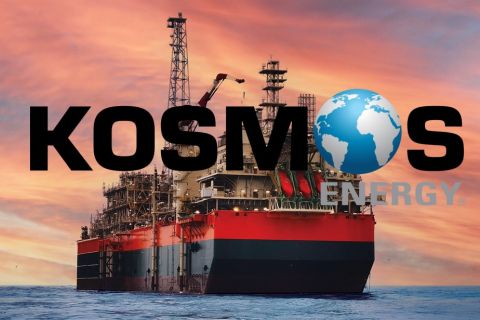
CGG Multi-Physics partnered with Airfast Indonesia and deployed its new sGrav meter with the Falcon AGG system on a modified Twin Otter aircraft to acquire its Falcon Full Spectrum Gravity survey in Sumatra. (Source: CGG Multi-Physics)
Airborne gravity gradiometry (AGG) maps minute density variations in the subsurface rocks by measuring the subtle changes in the Earth’s gravity field. AGG has been used as a structural mapping, lithology discrimination and lead-generating tool for more than a decade, and few exploration technologies have moved as swiftly up the value chain of an explorer’s toolkit, particularly in combination with 2-D seismic. Being able to map the lateral extent of structures out of the plane of 2-D seismic and by giving confidence in the orientation of key structures observed in the seismic, AGG provides a tremendous uplift in the information provided from either dataset in isolation. In essence, AGG provides an extra dimension.
For gravity gradient wavelengths shorter than about 25 km (15.5 miles), CGG’s Falcon AGG precision is extremely high and sets the benchmark for airborne gravity measurements. However, as with all AGG acquisition systems, accuracy diminishes as wavelength increases, making it difficult to reconcile gravity derived by AGG systems with conventional ground or marine gravity datasets. Depending on survey size, gravity signal with wavelengths of greater than 25 km typically cannot be accurately recovered with any available airborne gradiometry system. Geological features in this long wavelength band include deep basement structures or large carbonate platforms that are not easily imaged even by long-offset seismic data.
In areas of high-quality publicly available ground gravity coverage, the gradiometry data can be conformed to the regional dataset to provide a high-resolution gravity image. However, in regions where suitable data are not readily available, being able to measure the longer wavelength gravity data from the same aircraft becomes critical.
Global gravity data from external sources such as satellite altimetry-derived gravity provide good information in open ocean, but only at wavelengths greater than 50 km (31 miles), and its accuracy diminishes greatly near the coastline and shelf breaks, where most of the world’s offshore exploration occurs. Over land satellite gravity data are inadequate for exploration purposes. Basically, there is too much of a gap in the gravity spectrum between what is recoverable with AGG and what is provided by satellite gravity data.
Full-spectrum gravity solution
To provide a solution to this, CGG Multi-Physics has developed a new gravity meter, providing the missing link between conventional gravity and gravity gradiometry from a single airborne platform. This strap-down gravity system, known as sGrav, is a small lightweight instrument that sits alongside one of CGG’s six Falcon gradiometers, providing highly accurate gravity data at wavelengths greater than 18 km (11 miles). These data are acquired simultaneously with the AGG data under the same dynamic drape flight conditions, resulting in CGG’s Falcon Full Spectrum Gravity solution.
AGG and 2-D seismic (onshore or offshore) data complement each other extremely well. The high-resolution lateral information of the AGG is a perfect accompaniment to the vertical resolution of the 2-D seismic, with the combination of the two providing a pseudo-3-D depiction of the subsurface. In fact, the gravity gradiometry data can be modeled using inversion algorithms developed by CGG’s Multi-Physics Imaging group that deploy the seismic data as a constraint, allowing dips observed directly from the seismic to be honored.
South Sumatra Basin
In late 2016 CGG acquired the first commercial Falcon Full Spectrum Gravity survey in Indonesia on the island of Sumatra over two blocks covering some 11,300 sq km (4,636 sq miles) in total. This basin has had no previous systematically acquired ground gravity data that are publicly available, and the provenance, quality and resolution of what is available cannot be accurately determined. It was therefore decided that full-spectrum gravity data should be acquired to ensure the full range of gravity signal was captured.
The South Sumatra Basin is a mature area in terms of hydrocarbon exploration, with many known and producing oil and gas fields. One of the key reservoir units in this basin is the uplifted areas of Mesozoic and Eocene fractured and weathered basement consisting of granites and quartzites. These uplifted basement blocks host a significant proportion of the discovered hydrocarbons in the basin and also provide a positive density contrast against the surrounding sediments, making them ideal targets for AGG.
The most recent deformation event in the basin was basement-involved compression, resulting in basin inversion and reversal of normal faults in the Pliocene to recent times, forming the basement highs and anticlines that are the major traps in the area. This is the dominant signal observed in the data.
More subtle but still clearly evident in the gravity data is a north-south-oriented trend reflecting the earlier extension during the late Paleocene to early Miocene forming north-trending grabens that were filled with Eocene to early Miocene deposits, providing the rich lacustrine source rocks and hydrocarbon-generating kitchens that make the basin so prolific.
By imaging both the key source grabens and the overlying reservoir/trap locations, the data can be used qualitatively to immediately prioritize and rank exploration targets, improve the interpretability of the legacy 2-D seismic datasets, and significantly reduce the geological risk inherent in any exploration program. Fast-track images can be produced within days of survey completion to allow more informed decisions to be made, and with final data available within weeks of the survey, this potentially allows multiple phases of exploration to be undertaken in one season.
More quantitative information can be derived from full-spectrum gravity data with modeling and inversion, ideally using seismic and well data as constraints. Prospects and leads can be modeled with more confidence than before, allowing better decisions to be made throughout the exploration process, from seismic positioning through integrated interpretation projects and ultimately drilling decisions, all providing tangible cost savings to any exploration project.
This survey has shown the importance of longer wavelength information in gravity gradiometry surveys by better imaging the deep and wide grabens. The survey also has demonstrated the capability to simultaneously measure gradiometry and the longer wavelength gravity information under the dynamic flight conditions of a draped airborne survey. The success of this survey has led CGG to investigate the possibility of further Falcon surveys over the wider South Sumatra Basin, possibly paving the way for a renewed phase of exploration in underexplored areas of this highly productive basin.
Recommended Reading
Some Payne, But Mostly Gain for H&P in Q4 2023
2024-01-31 - Helmerich & Payne’s revenue grew internationally and in North America but declined in the Gulf of Mexico compared to the previous quarter.
Uinta Basin: 50% More Oil for Twice the Proppant
2024-03-06 - The higher-intensity completions are costing an average of 35% fewer dollars spent per barrel of oil equivalent of output, Crescent Energy told investors and analysts on March 5.
In Shooting for the Stars, Kosmos’ Production Soars
2024-02-28 - Kosmos Energy’s fourth quarter continued the operational success seen in its third quarter earnings 2023 report.
M4E Lithium Closes Funding for Brazilian Lithium Exploration
2024-03-15 - M4E’s financing package includes an equity investment, a royalty purchase and an option for a strategic offtake agreement.
California Resources Corp. Nominates Christian Kendall to Board of Directors
2024-03-21 - California Resources Corp. has nominated Christian Kendall, former president and CEO of Denbury, to serve on its board.





